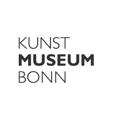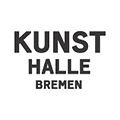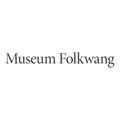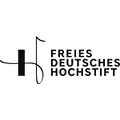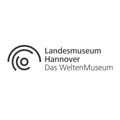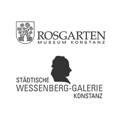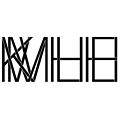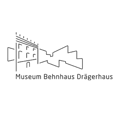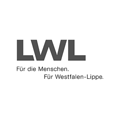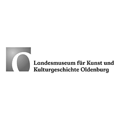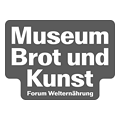The Kunstmusem Bonn holds a key position amongst German museums, due to the fact it constantly extends its collection by purchasing German art. Georg Baselitz, Gerhard Richter and Joseph Beuys are just a few illustrious names in the collection. Another focus of the museum is on its considerable August Macke collection and Rhenish Expressionism.
-
-
Login
Kunstmuseum Bonn
The diverse collection at the Kunstpalast Düsseldorf comprises the following areas:
- picture galleries with emphasis on Italian, Flemish, Dutch and German painting from the renaissance to classicism as well as German painting from the 19th and early centuries, in particular the Düsseldorf school of painting.
- Modern art with works from the 20th century through to modern day,
- a collection of prints from the 15th to the 21st century, in particular baroque paintings, 19th century, expressionism and photography,
- sculpture and applied art with emphasis on medieval, gothic and baroque sculpture, furniture from the 15th and 20th centuries, arts and crafts as well as Islamic and Southeast Asian arts.
- The Glasmuseum Hentrich includes expositions from ancient Egypt through to contemporary studio glass
Kunsthalle Bremen
The Kunsthalle was founded as part of an initiative by the Bremen Art Association in 1849. Today it is home to a comprehensive collection of masterpieces spanning six centuries. The works in the collection range from the 14th century to modern day and include paintings, sculptures, graphic works and new media art.
One of the collection’s focal points comprises German and French paintings from the 18th to the 20th century. Impressionist works have been of particular significance since the Kunsthalle was first founded. Works by Lovis Corinth, Max Liebermann, Auguste Renoir and Camille Pissarro, for example, can be found in the collection. Paintings by German and French romantics also make up parts of the collection, complemented by works by the “Barbizon school of painters” or the “German Romans”, to name just a couple.
Works by Fritz Mackensen, Heinrich Vogeler, Hans am Ende, and other artists represent the Worpswede artists' colony, whose diversity is illustrated in Kunsthalle Bremen. One noteworthy name in this section is Paula Modersohn-Becker; the Kunsthalle owns many of her works.
Museum Folkwang Essen
Museum Folkwang in Essen is one of the most renowned German art
museums and is home to an extensive collection of 19th century German
and French paintings. Impressionist masterpieces are represented just
as well as works of German Romanticism and French Classicism.
Furthermore, a range of European avant-garde pieces and its
varied tendencies including Cubism and Surrealism can be found in
Museum Folkwang. German Expressionism is also represented by the
artist group Der Blaue Reiter (The Blue Rider) and others.
As a significant centre for modern art, Museum Folkwang also
presents important American artists like Mark Rothko, Jackson Pollock
and Frank Stella. A range of works by the artists' association ZERO
can also be found, artists including Günther Uecker, Otto Piene and
Heinz Mack are some of those representing ZERO. The collection is
complemented by contemporary art which includes work by artists such
as Gerhard Richter, Georg Baselitz and Markus Lüpertz.
Alongside paintings, Museum Folkwang's collection also houses
important works of sculpture and new media art. Equally noteworthy is
its extensive photograph collection: the independent division is made
up of more than 60,000 photographs ranging from documentation and art
photography from the beginnings, right through to the present day.
Frankfurter Goethe-Museum
Frankfurter Goethe-Museum
Großer Hirschgraben 23-25
60311 Frankfurt am Main
The Goethe Museum is the only picture gallery dedicated exclusively to the Goethe era. The collection displays works by artists from German speaking countries, ranging from late Baroque through to Strum und Drang, Classicism, Romanticism up to the Biedermeier period. Highly valued by the great poet, who was himself an illustrator and collector, the fine arts are one of the focuses in his poetry – "what would the world be without art?".
Landesmuseum Hannover
The Landesgalerie houses one of the largest collections of German Impressionism and early Expressionism, including notable groups of masterpieces by Max Liebermann, Max Slevogt, Lovis Corinth and Paula Modersohn-Becker. French Impressionists are represented by important works, amongst them Claude Monet and Alfred Sisley. Representing the 19th century are artworks by Caspar David Friedrich, Carl Spitzweg, Arnold Böcklin, Hans Thoma, Wilhelm Leibl, Adrian Ludwig Richter and others. Further highlights are masters of the Middle Ages and German and Italian Renaissance, represented by names like Master Bertram, Lucas Cranach, Tilman Riemenschneider, Sandro Botticelli and Jacopo Pontormo. The Baroque section features works from artists like Peter Paul Rubens, Rembrandt van Rijn and Jacob van Ruisdael.
Städtische Museen Konstanz: Wessenberg Galerie und Rosgartenmuseum
The basis of the collection at Städtische Wessenberg-Galerie Konstanz was a donation from the late Diocesan administrator Ignaz Heinrich von Wessenberg, who died in 1860. As a cleric he collected mailnly religious artworks. The Rosgarten Museum offers a wide range of exhibits representing the history, art and culture of the Lake of Constance, the surrounding area and the city itself from stone age up to the present day.
Kunstmuseen Krefeld
Joseph-Beuys-Platz 1
47798 Krefeld
Haus Lange
Wilhelmshofallee 91–97
47800 Krefeld
With their exhibition program the Kunstmuseen Krefeld occupy three houses full of character and take on a unique role in the German museum landscape due to this architectural peculiarity. After extensive renovation, the Kaiser Wilhelm Museum was reopened in July 2016 and shines in new splendour.
On display are highlights of the collection, including a room installation created by Joseph Beuys, as well as temporary exhibitions. The Villenensem-ble Haus Lange and Haus Esters by Ludwig Mies van der Rohe are among the architectural highlights of Neues Bauen in Germany. Since 1955 Haus Lange and since 1981 Haus Esters have been used as exhibition venues for contemporary art by the Kunstmuseen Krefeld. The art museums have a collection of 14,000 works from the early modern period to contemporary art. The focus of the collection is on modern and contemporary art since 1945. The collection also includes outstanding works of applied art by Peter Behrens and Henry van de Velde, among others.
Museum Behnhaus Drägerhaus Lübeck
The Museum Behnhaus Drägerhaus houses an important collection of paintings and sculptures from the 19th century and the Modern era. The museum has its emphasis on Romanticism and the Nazarene Movement, with works from Caspar David Friedrich, Carl Blechen, Carl Gustav Carus and Friedrich Overbeck, a resident of Lubeck. Paintings by Max Liebermann, Lovis Corinth, Max Slevogt, Gotthardt Kuehl, Ernst Ludwig Kirchner and, most importantly, Edvard Munch, who was active in Lubeck at the beginning of the 20th century, represent the modern era. The Museum is housed in two villas dating from the 18th century, the Behnhaus and the Drägerhaus, with their historic interiors also on display.
Bayerische Staatsgemäldesammlungen
The Bayerischen Staatsgemäldesammlungen is the authority that succeeded the Centralgemäldegaleriedirektion (Central Painting Gallery Administration), which was established in the late 18th century after a collection of paintings owned by the Wittelsbacher family grew considerably due to its inheritance of the Mannheim and Zweibrück Galleries.
The Bayerischen Staatsgemäldesammlungen are responsible for the maintenance for a significant proportion of the paintings and other works of art belonging to Bayern as well as associated museums in Munich: The Alte Pinakothek, The Neue Pinakothek, The Pinakothek der Moderne, The Sammlung Schack and a dozen affiliated galleries throughout Bayern. These trace back in part to the early 19th century when, after secularisation, temporary quarters for the state art collection were being looked for throughout the former kingdom. After reconstruction that took place in the 1960s and 1970s, they present a high quality collection of pictures, each matched to its region and town.
LWL – Museum für Kunst und Kultur Westfälisches Landesmuseum Münster
The picture galleries at the Landesmuseum Münster hold an extensive permanent collection dating from the middle ages up to the contemporary Avantguarde - the result of collecting for over a hundred years, starting back in 1908 - the foundation date of the museum. As well as focusing on the old masters, the collection in the Modern gallery also holds contemporary work. Its wide range of paintings includes German Impressionism (represented by Max Liebermann and Lovis Corinth, to name just two) and Expressionism (Brücke and the Blaue Reiter). The museum’s most outstanding artist from the Blaue Reiter is the Westphalian painter August Macke, whose estate is administrated by the Museum. The modern section is completed with important exhibits from the Bauhaus era and the fifties.
Landesmuseum für Kunst und Kulturgeschichte Oldenburg
Prinzenpalais: Since its renovation and the
restoration of the original room layout, the former Prinzenpalais
located on the Damm serves as an exhibition space for art of the 19th
and 20th centuries. On two floors the progression of the fine arts in
Germany is illustrated, starting with Romanticism and Classicism. The
focus of the collections is on the artworks of German Impressionists
and Expressionists of the group Brücke, who settled in Dangast at the
Jade Bight. The museum is also acknowledged for the paintings of the
Dangast artist Franz Radziwill (1895-1983), whose work is to be
classified as New Objectivity (German: Neue Sachlichkeit) or Magic Realism.
Augusteum: The Italian Renaissance building, erected
between 1865 and 1867 and lavishly decorated with elements of
Historicism, was to become the first art museum of Oldenburg. Between
1981 and 2003 it housed painting galleries of the 19th and 20th
centuries. Now the building, purpose built as an exhibition space,
once more contains parts of the grand ducal funds of paintings. The
collection comprises mostly Italian and Dutch paintings between the
15th and 18th centuries as well as European paintings dating from
medieval times up until the present day. The ground floor is used to
display significant examples of the history of painting and post-war
art in temporary exhibitions.
Museum Brot und Kunst – Forum Welternährung
Salzstadelgasse 10
89073 Ulm
The Museum Brot und Kunst – Forum Welternährung is a theme focused museum dedicated to the research of subjects related to bread. Presently the collection includes about 18,000 exhibits from various cultures and different parts of the world. About 700 objects are permanently displayed on 1,150 square meters of the Salzstadel Ulm.

